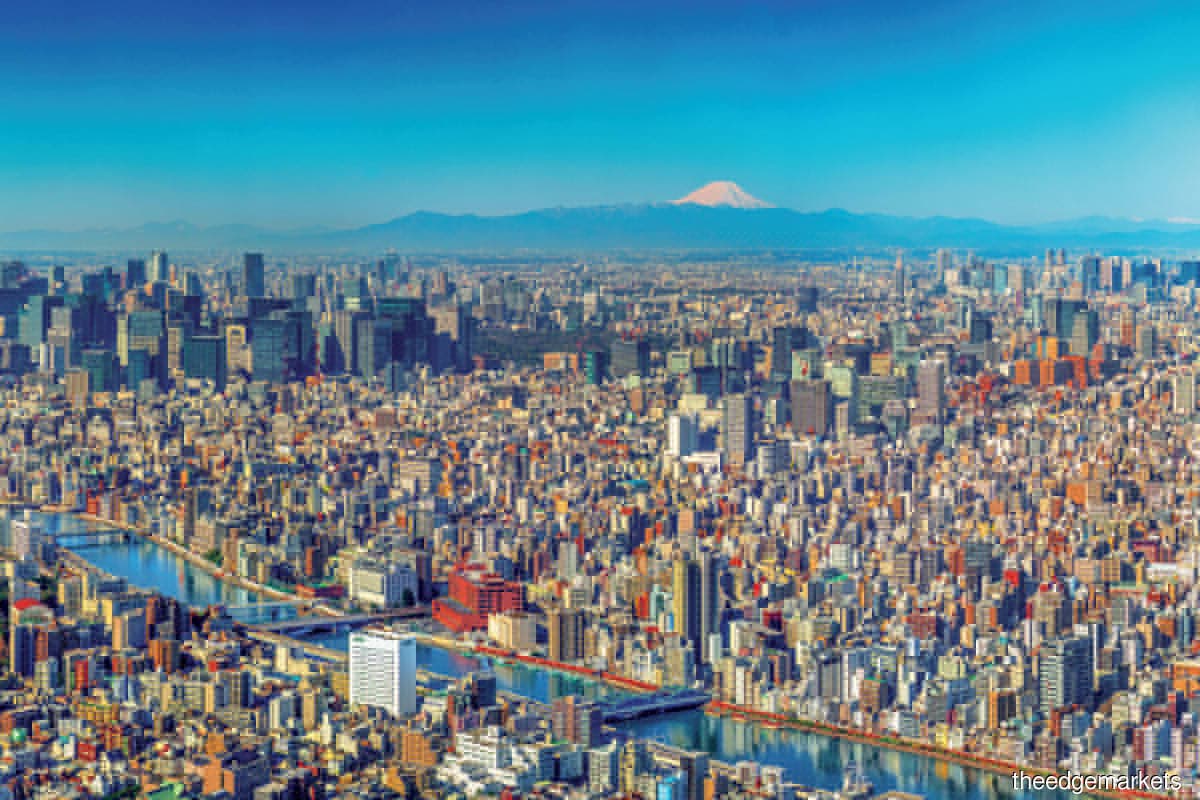
This article first appeared in City & Country, The Edge Malaysia Weekly on April 24, 2023 - April 30, 2023
Tokyo had never appeared more alive as I wandered through Ginza, which was drenched in city lights and full of foreign visitors. Being relatively familiar with the city, I reconnected with friends and reached out to locals, and inadvertently obtained insights into its real estate market, which remains vibrant despite the challenges.
With its strict Covid-19 policies, Tokyo was one of the last remaining cities in the region to open its doors to all visitors post-pandemic in October last year.
In a bid to strengthen its real estate market, foreign direct investments and demand by both locals and foreigners, the government is banking on its tourism reopening and campaigns, as well as stabilising its interest rates. Tokyo’s residential sector appears to be on a stable footing, with the prospects of continuous recovery in FY2023.
Savills Japan Co Ltd associate director Hafiz Ismail tells City & Country in an email interview: “After the Great Tohoku Earthquake in 2011, the demand for Tokyo’s real estate market has been on a steady increase over the last 11 years.”
Areas in which there is a high demand in Tokyo include Shibuya, Minato, Shinjuku and Chiyoda, Chuo and other major wards, he adds.
Hafiz says the appreciation in the value of properties in Tokyo varies, depending “on the location, property type and market conditions. In general, properties in Tokyo are deemed to be more defensive than those in suburban areas”.
Property hotspots and appreciation in value
Hafiz adds that properties in Tokyo are also deemed to be more stable than those in suburban areas. “For example, a study published by local real estate media suggests that the average residential asset prices in Toyosu and Ariake districts increased about 42% and 40% respectively in 2022 over the last three years [since 2019], followed by Kachidoki district, at a 36% increase,” he says.
“This is likely to be due to the rise in the number of young families who want to purchase high-rise condominiums (also known as tower mansions in Tokyo), which are often built with improved seismic safety specifications, additional facilities such as a reserved lounge, guest rooms, children’s space and incredible views of Tokyo Bay. The popularity of these districts is also due to their proximity to the central business district.”
The residential segment is gaining popularity among young families as well as the elderly, who are purchasing high-rise condominiums in Tokyo. The modern building specifications, strategic location and convenient accessibility to public infrastructure are usually key attractions for this type of buyers.
“This type of development has also been attracting wealthy Japanese people who would like to purchase for investment or the inheritance tax benefit loophole. Meanwhile, landed properties are typically located in peripheral areas and often built with wooden or steel structures,” says Hafiz.
“This type of asset offers larger unit sizes (usually more than 100 sq m) and typically include car parking space for free. They are popular among families who do not mind a longer walking distance from train stations, in exchange for the abovementioned benefits and also freedom from the rules and regulations of condominium homeowners’ associations, which are quite strict, with many do’s and don’ts.”
According to Hafiz, most individuals or couples are generally purchasing a residential asset for their own occupancy, which typically allows them to benefit from the current ultra-low financing rate. “The housing (jutaku) loan financing rate in Japan has been very attractive for many years and was recently reduced to 0.3% to 0.4% a year,” he says.
The financing rate tends to be higher, however, when purchasing a residential asset for investment purposes. Hafiz says: “Under a few conditions, the buyers who use the purchased asset for their own occupancy will also be able to receive a special tax credit (known as jutaku-loan-koujo), which is literally an annual cashback at 0.7% of the remaining loan balance for as long as 13 years.
“There are also a few other tax incentives awarded to homeowners who purchase their own living space and, in some cases, it would be more economically viable to purchase rather than rent an apartment.”
Target market, key drivers and outlook
Unlike other countries, residential development projects in Japan are largely focusing on local Japanese buyers.
“There may have been few sales and marketing activities conducted outside Japan (such as Singapore, Hong Kong and Taiwan) targeting international buyers, but this is still considerably marginal,” observes Hafiz.
“When buying a property in Japan as a non-resident, it is advisable to choose a reputable partner or agency because the process can be very complicated as it would involve a lot of documentation in the Japanese language. And after becoming a real estate owner in Japan, you will be subject to taxation, payments and procedures.”
The steady influx of people into Tokyo remains a key driver for its residential segment. The city has been receiving a positive net migration of Japanese people from suburban areas over the last two decades, as the younger generation relocate from their hometowns to find better career opportunities in larger cities such as Tokyo.
“Although it is still in its early stages, the government’s recent commitment to attract foreign talents to work in Japan would bring about a positive outlook for Tokyo’s residential market. Thorough city planning and ongoing projects by local developers would also ensure the market supply stays at a healthy level,” Hafiz says.
Save by subscribing to us for your print and/or digital copy.
P/S: The Edge is also available on Apple's AppStore and Androids' Google Play.

